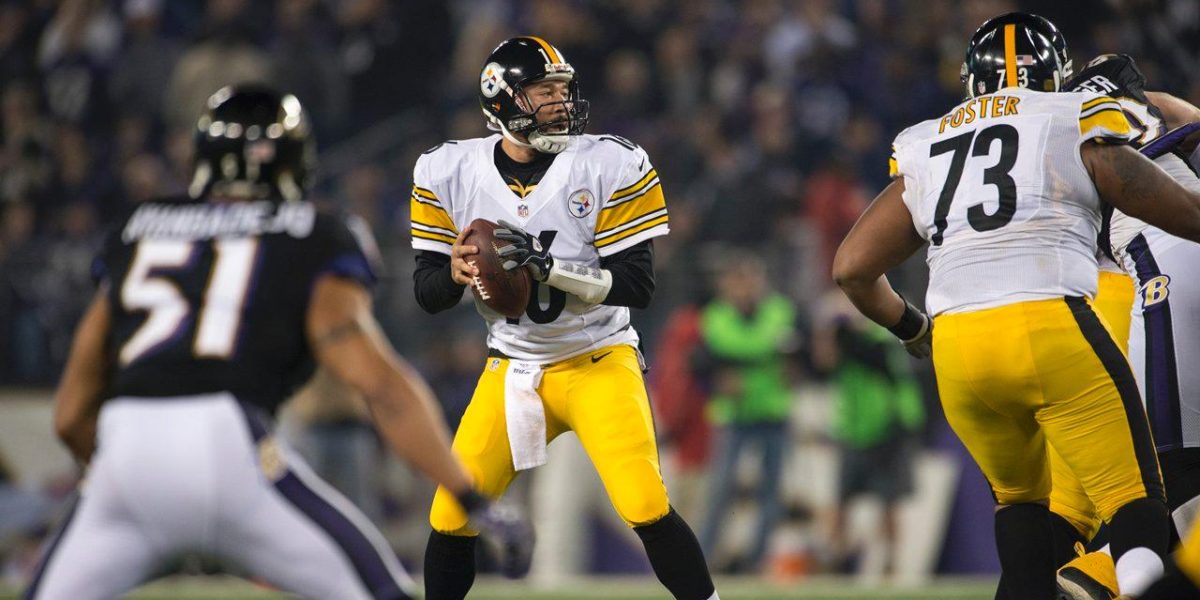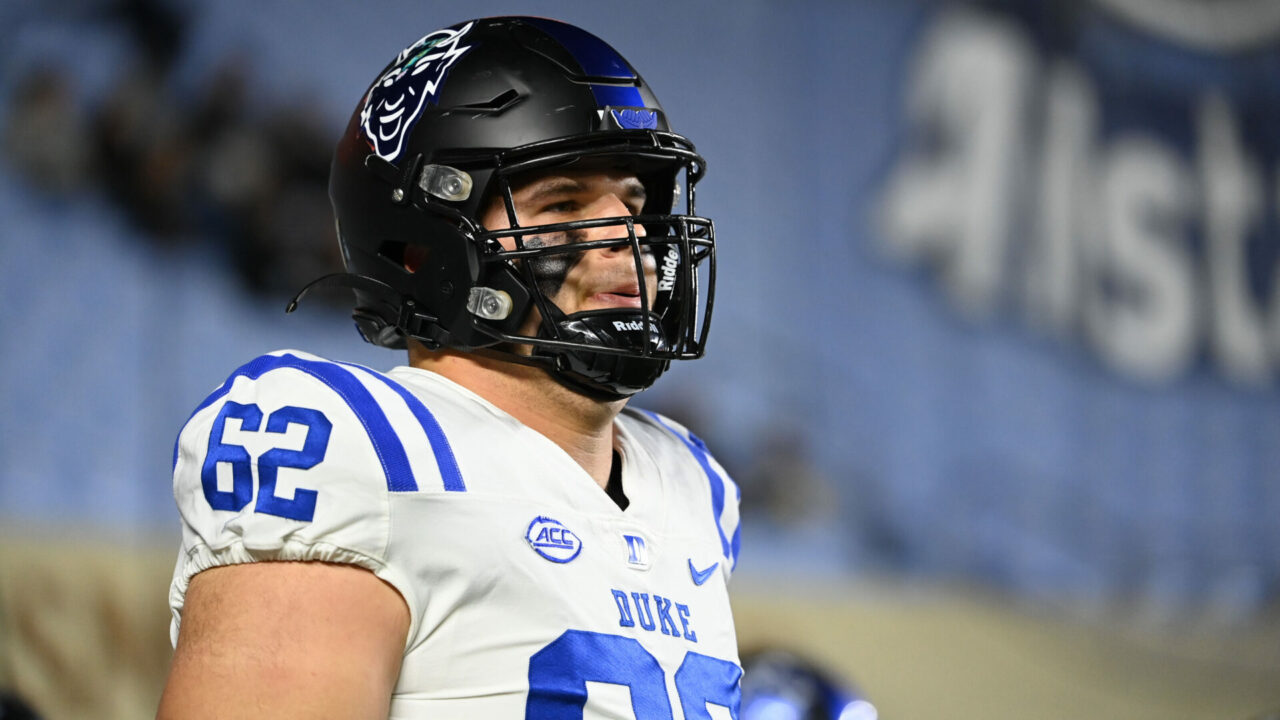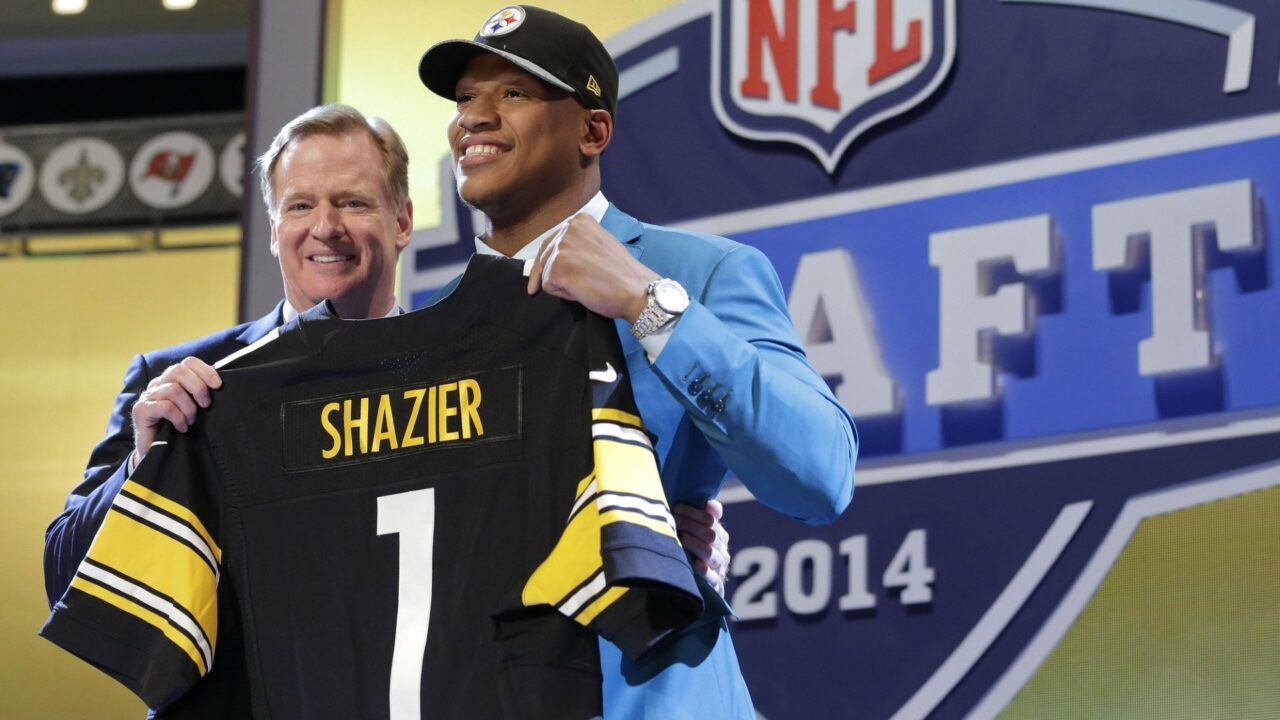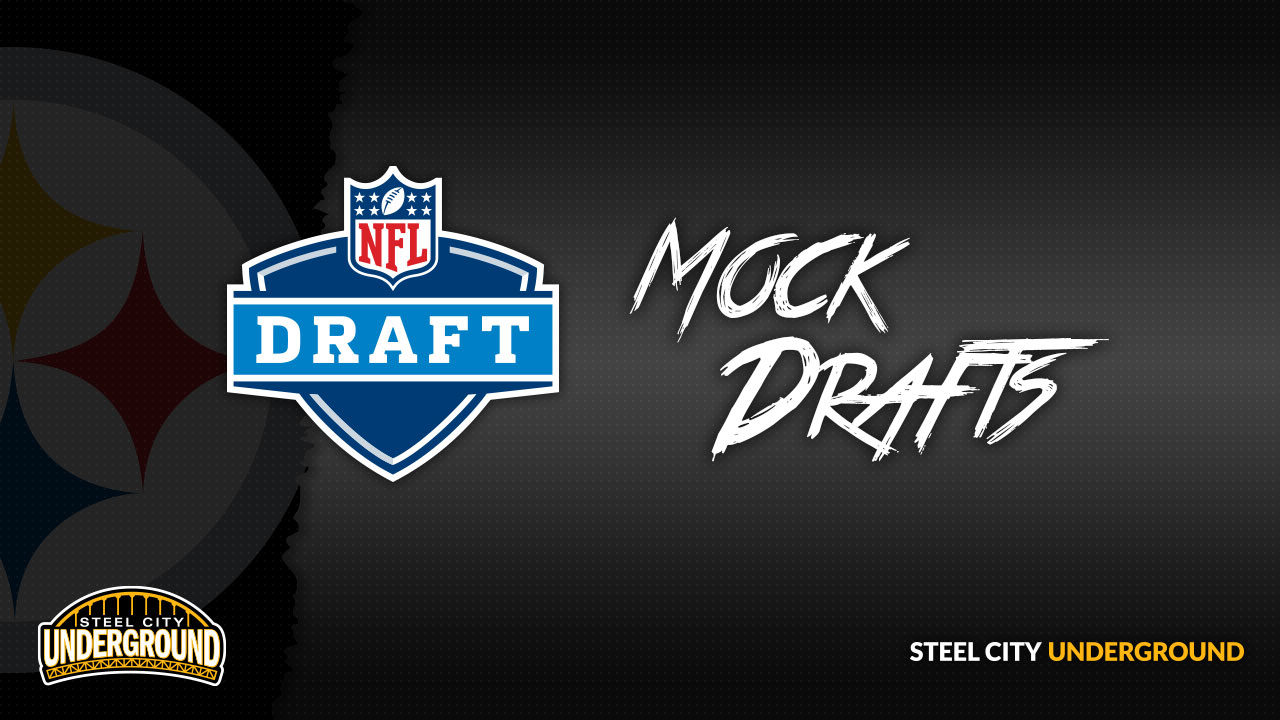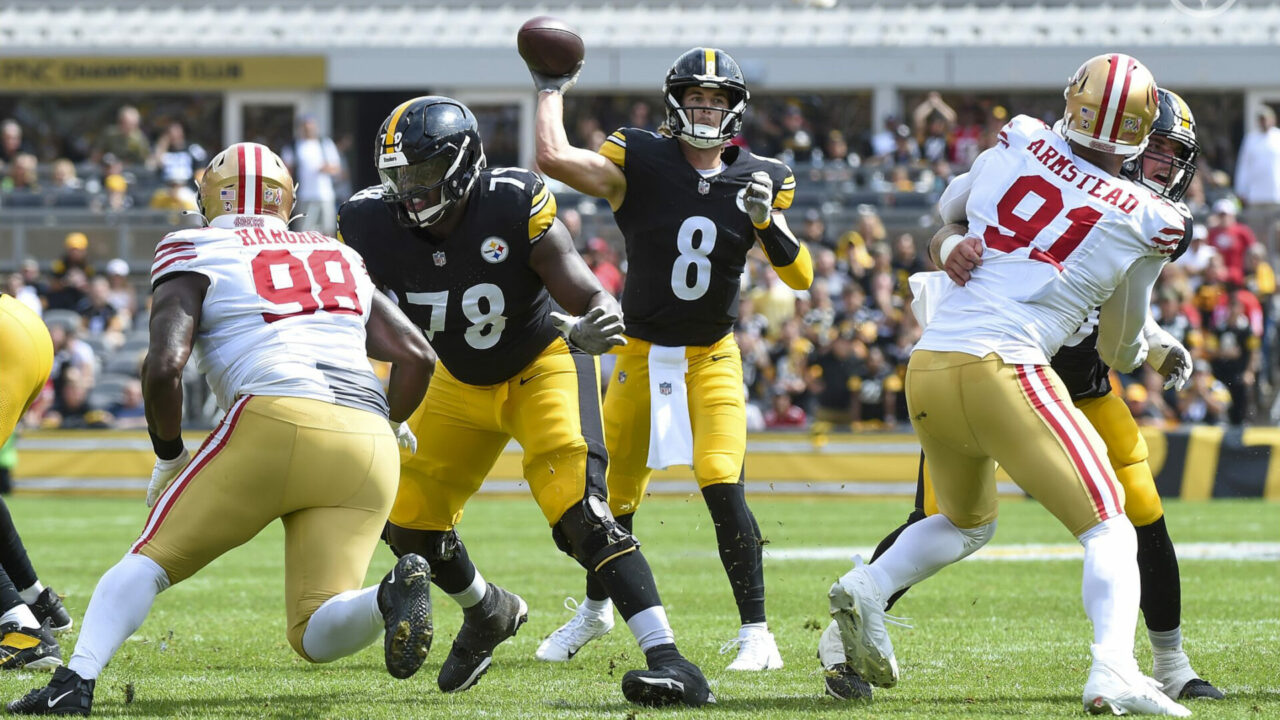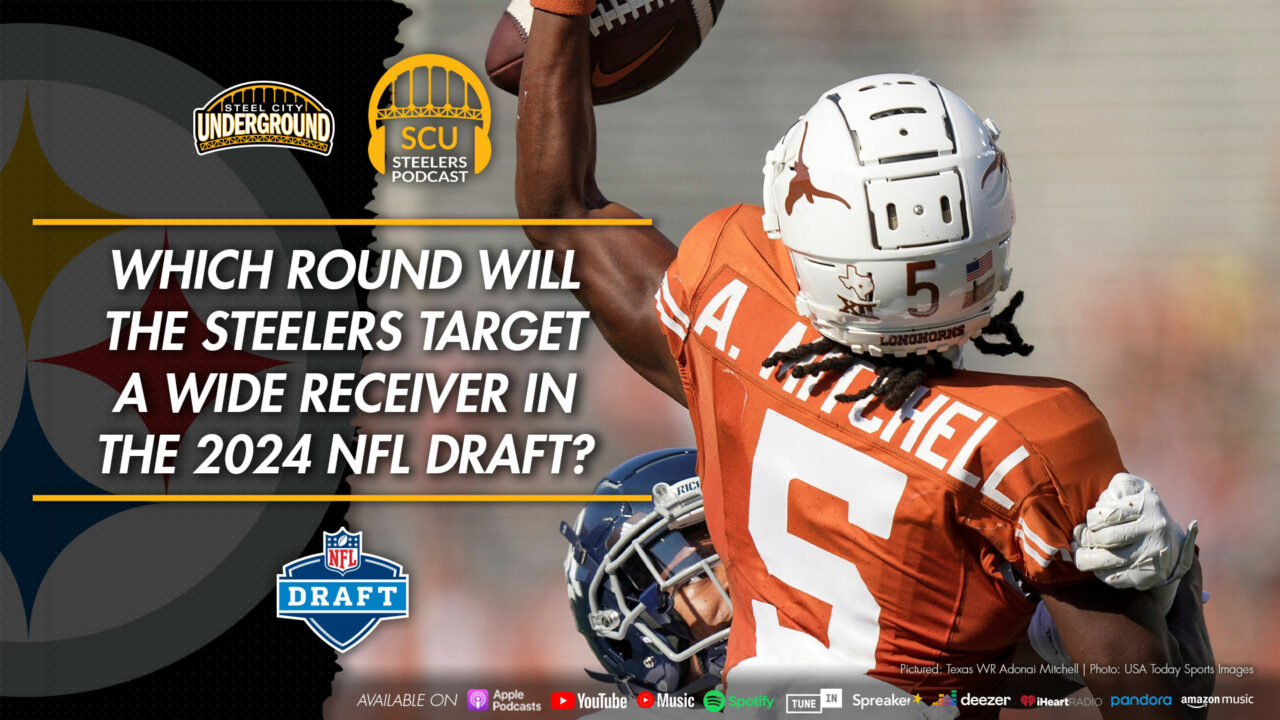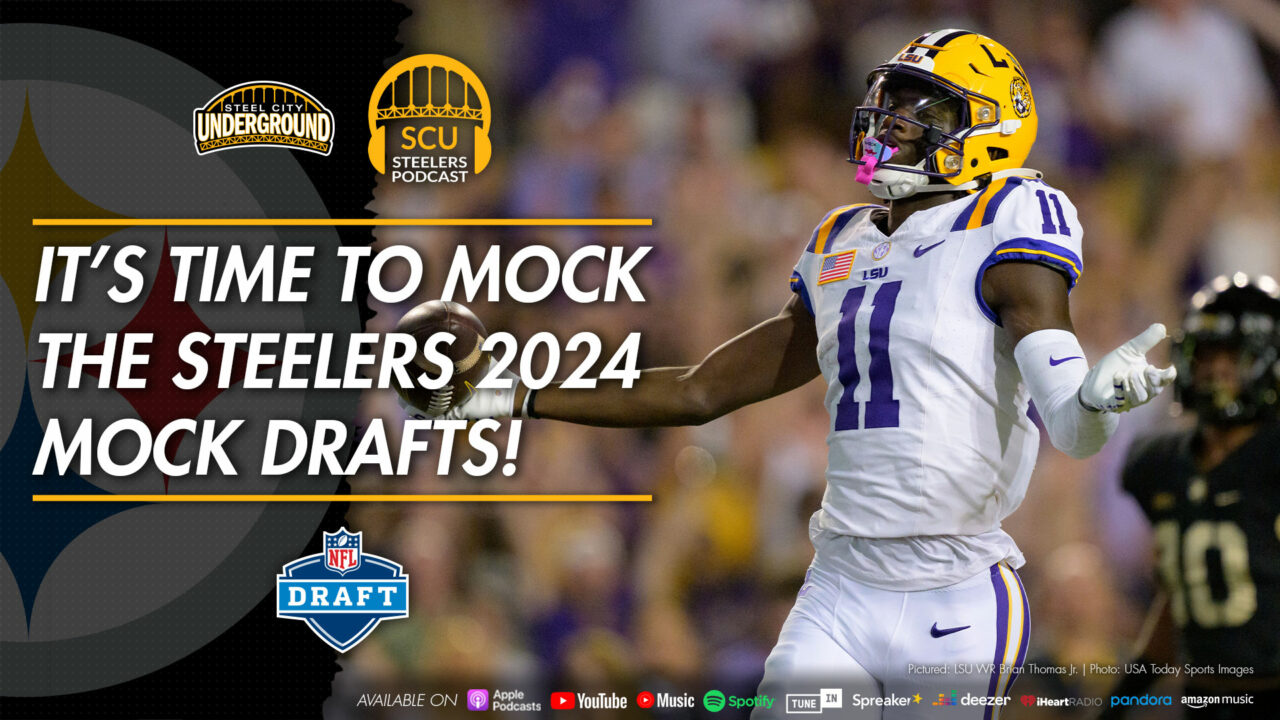Were past Steelers backup quarterbacks as good as we remember?
I’m well aware that it appears I’ve been on a crusade to clear Landry Jones‘ name to Steelers Nation, however, the one thing I will continue to remain consistent on, is that Jones is a backup.
And only a backup.
He’s not meant to be a starter, Ben Roethlisberger‘s replacement, or any of the above. That is true of other quarterbacks across the league as well, where Jones’ numbers stack up similarly to his backup peers.
Backup quarterbacks are backups, because they are not starters.
It seems simple enough, yet some fans continue to critique backups as being something more. Comparisons with other recent drafted quarterbacks, soon-to-be free agents, and other backups, have shown this is true more often than not. There are a few exceptions, usually where a starter has lost their job (Dallas) or instances where a team changes QBs like I change socks and underwear (San Francisco, Cleveland) but in most cases, a backup is nothing more than a player with little experience and subpar stats.
I’ve also heard the argument of “who cares about other teams… we only care about the Steelers”. That is the premise for this particular article, which focuses on the backups that Pittsburgh has had behind Ben Roethlisberger during his career. It may come as a surprise, but like Landry Jones, those starters weren’t all that great either.
It pains me to analyze this, and I must preface the below comments by saying I genuinely liked all of these former Steelers. But even as Charlie Batch said on one of 2016’s postgame radio shows, “I wasn’t Ben Roethlisberger… No one is Ben Roethlisberger.”
Nor were the following passers.
Tommy Maddox
I loved “Tommy Gun” while I was growing up. I was a huge WWF (now WWE) fan as a teenager, and Maddox ended up as the MVP of WWE chariman Vince McMahon’s fledgling football league, the XFL.
I was familiar with Tommy from there on, and when he landed with my favorite team, the Steelers, it felt like a match made in heaven.
Maddox originally backed up Kordell Stewart, before landing in a starting role with the Steelers. Playing every game in 2003, Maddox would go 6-10 as a starter. 2003 is an important milestone in Steelers history, as it’s the last season Pittsburgh finished below .500.
Ben Roethlisberger was drafted in 2004, and eventually became the starter following an injury which shelved Tommy for a few months.
The rest is history. Maddox went 15-20-1 as a starter in Pittsburgh. His seasons, not including 9 pass attempts in 2001, were a consistent decline in pass completion percentage: 62.1, 57.4, 50.0 and 47.9. His TD:INT ratio also dipped from 20:16, 18:17, 1:2 and 2:4, as did his QB ratings (85.2, 75.3, 58.3, and 51.7).
Tommy’s tenure ended after the Steelers released months after their victory in Super Bowl XL.
Byron Leftwich & Dennis Dixon
I wanted to skim over Charlie Batch for a moment, highlighting both Leftwich and Dixon as backups who had a cup of coffee on the field for the Steelers.
Leftwich was added in 2008 after Batch broke his clavicle in the preseason. In relief duty, Leftwich completed 58.3% of his passes for 2 touchdowns and no interceptions that season.
He would leave to play in Tampa for a season, before returning to Pittsburgh in 2010 and 2012. His total of 8 games played in, with 1 start, round out to 53.1% of his throws being completed, for 617 yards, 2 touchdowns and 1 interception while with the Steelers.
In case you forgot, Landry Jones wasn’t the first quarterback drafted to play behind Big Ben. Dennis Dixon was selected in the 5th round of the 2008 NFL Draft. He’d get his first start by when injuries sidelined Ben and Batch before a November 2009 primetime game against the Ravens. Dixon would throw for a touchdown and run for another, completing 12 of his 26 passes. However, the overtime thriller ended on a Dixon interception which led to Baltimore’s game-winning field goal.
Leftwich was initially named the starter when Ben Roethlisberger was suspended the first four games of the 2010 season, but was sidelined with a knee injury in the final preseason game. Dixon would be named the starter (over Batch) for the home opener against the Falcons, despite throwing several interceptions in preseason games.
The Steelers would win three of those four games, with Dixon winning in overtime against Atlanta, before tearing his meniscus in the second week of the season against the Titans. He was placed on Injured Reserve later that year, and would depart the team in 2012.
Charlie Batch
Batch, who played for Pittsburgh from 2003-2012, owning a 6-3 record as a Steelers starter. He is often considered the benchmark for Steelers backups. I really dig into Charlie’s individual games, as my own memory of Steelers wins with Batch under center, were not exactly because of his play. (He’s also the most recent backup with the most starts and appearances.)
It pains me to say this, but sometimes the Steelers won in spite of his mistakes.
Batch completed 9 of his 16 passes in his first start over the Green Bay Packers in November of 2005. His 39.8 QB rating for that game was due to throwing no touchdowns, and one interception, while fans will recall a memorable Troy Polamalu 77-yard fumble return for a touchdown as the deciding points in a 20-10 victory.
Batch would also add another win to his record a week later when the Steelers faced the Browns. Charlie would be involved in a touchdown, via a QB sneak, as he only attempted 19 passes in the game, with no turnovers. There would be a TD pass in that game, however, but it came from Antwaan Randle El throwing a 51-yard touchdown pass to Hines Ward, much in the same vein that the two would connect later on in the Super Bowl.
Batch wouldn’t see action again until 2006, replacing Big Ben when the latter had to have an emergency appendectomy days before the season opener. In one of his best games with the team, Batch threw for 209 yards and 3 touchdowns for a 126.5 rating, in a 28-17 win over the Dolphins. Later in the same season, Batch would participate in another OT thriller with the Falcons, replacing a concussed Roethlisberger while completing 8 of 13 passes for 195 yards and 2 touchdowns (including a 70-yard TD connection to Hines Ward).
The Steelers would end up losing that game 41-38, as well as another game where Batch replaced Big Ben against the Ravens that December. It’s not one of his more memorable performances, as the quarterback struggled, completing only 4 of his 19 throws for 49 yards in a humbling 31-7 defeat.
Charlie also struggled in a start against Baltimore nearly a full year later, finishing 16/31 for 218 yards with 2 TD, 2 INT, and a 69.0 rating.
It would take nearly 3 full years before Batch would throw a regular season pass for the Black and Gold again. With Pittsburgh signing Leftwich during his 2008 clavicle injury, Batch would return, but not play in 2009 (the year they also drafted Dennis Dixon). In 2010, Leftwich and Dixon would both get depth chart nods over Batch, until each was injured, leaving Charlie as the last man standing. Dixon started and won the aforementioned overtime 2010 home opener against the Falcons, before making way to Batch in the second week of the season against the Titans.
In that game, Batch would go 5/11 for 25 yards, with no passing touchdown or interception. He’d finish with a 52.5 rating, as the Steelers relied on four Jeff Reed field goals and an Antonio Brown punt return for a TD to win.
One week later Charlie would have the other of his best games as a Steeler, when Pittsburgh rolled to a 38-13 blowout win down in Tampa. Batch finished 12/17 for 186 yards, 3 TDs and 2 INTs for a 106.5 QB rating in that game, before coming home in Week 4 to lose a tight 17-14 contest against the Ravens. The QB would complete only 12 of his 21 passes for 141 yards, with no scores and a pick in that game, earning a 57.8 rating.
Charlie started three more times before retiring following the 2012 season. During that time, he competed with Dixon and Byron Leftwich for playing time, often finding himself as the third-string quarterback in the twilight of his career. In December 2011, he would start against the Rams and end with a 49.1 rating. In 2012, Batch threw three picks, with a 38.7 QB rating, in a miserable loss on the road to the Cleveland Browns.
His final career start as a Steeler was an upset road win in Baltimore, following that bad Browns loss, where Charlie completed 25/36 passes for a touchdown, while throwing an interception as well, with an 89.6 rating.
Bruce Gradkowski
I’d love to give an honest opinion of Bruce G’s time in the Burgh, but… he never played!
Okay, that’s not complete honesty: he attempted a total of 3 passes, all in a postseason loss to the Ravens. Gradkowski was otherwise hurt and placed on IR during the last two preseasons, with his NFL career likely over.
For that reason, he gets mentioned in this article, but grades as an incomplete.
Michael Vick
Signed after Gradkowski went down with a shoulder injury in the 2015 preseason, Mike Vick was called into duty following a Roethlisberger injur that sidelined the star for several games that season.
Vick was nearly out of football that season, but looked solid to start with the Steelers. He completed 5 of his 6 passes for 38 yards against the Rams, but lost an OT struggle against the Ravens three days later (19/26, 124 yards, 1 touchdown).
A week later against the Chargers, Vick struggled to connect with any of his receivers, completing exactly half of his 26 passes for 203 yards, a touchdown and an interception. He would do the same after, completing 3 of his 8 passes for six yards against the Cardinals, before leaving that game with an injury.
Vick would finish his Steelers career with a 60.61% completion percentage, but a 79.8 quarterback rating.
Conclusion
There is no tried and true answer to any team’s backup quarterback situation. Signing a veteran or grooming a draft pick have both proved to be mixed experiences. Comparing those backups with current number two Landry Jones, yields the following results:

Note: Maddox’ stats are for the year he backed up Big Ben.
As you can see, Jones stacks up favorably with every other Steelers plan B, including Charlie Batch. Jones’ completion percentage is only second to Vick. (Which is a mere miracle in and of itself, since he only attempted 66 passes!) He also ranks favorably in TD:INT ratio while having a .500 record as a starter and the best QB rating of the bunch.
In fact, Jones has nearly halved all of Charlie Batch’s stats, yet, Batch is beloved and Jones is regularly booed. Maybe its due to Batch having a better defense, being a hometown guy, or having been around the team much longer than Landry; that much I’ll never be able to figure out.
However, I can tell you this much: mentioning that Landry’s success is predicated on a long touchdown reception by Martavis Bryant while ignore Batch did similar with Hines Ward, or talking about how veterans/rookies will be a much better alternative to the Steelers current backup, isn’t being honest with one’s self, when compared to others who have filled the same role.
Our expectations of a backup quarterback need to start falling inline with how backups play: in doing so, we’ll finally come to the realization that none of the names listed were particularly great QBs during their time with the Steelers, and that Landry Jones, is at least on par, if not better, than those who came before him.
